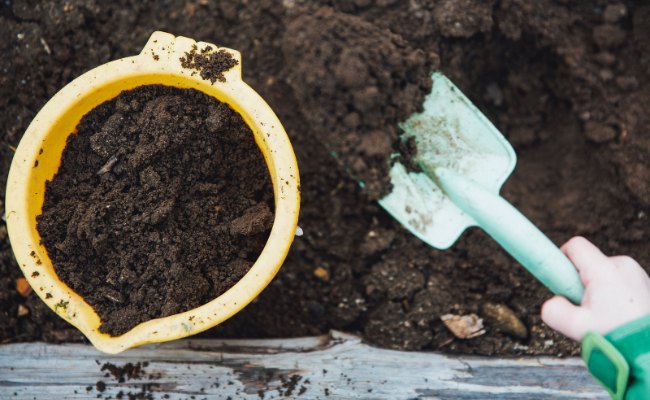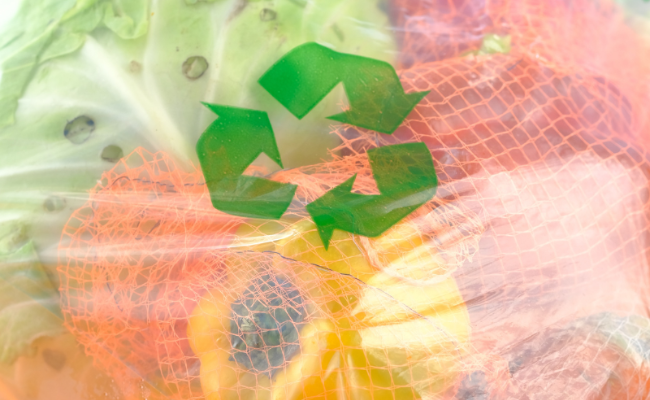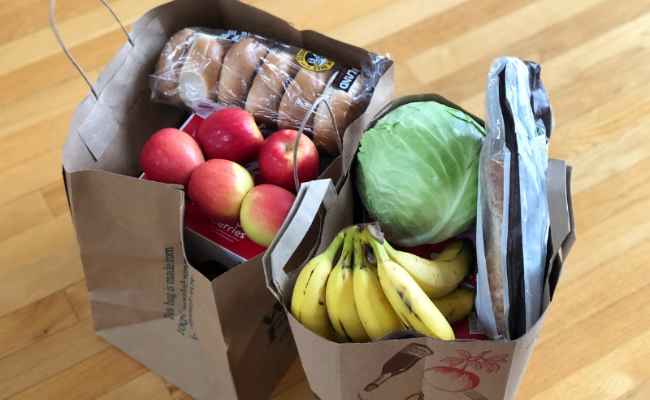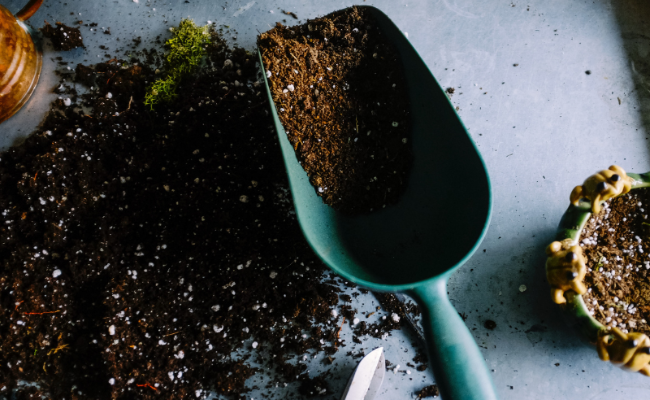How to properly dispose of compostable products
Compostable packaging has emerged as a viable alternative to traditional packaging materials in our quest for more sustainable and environmentally friendly practices. It is designed to break down into natural elements, contributing to the environment’s health.
However, many people need help disposing of compostable packaging properly. In this article, we will explore the difference between compostable and biodegradable packaging, its importance, and the various methods and best practices for disposing of compostable packaging.
Compostable vs. Biodegradable Packaging
 Compostable and biodegradable packaging are both environmentally friendly alternatives to traditional plastic packaging but differ in their decomposition processes.
Compostable and biodegradable packaging are both environmentally friendly alternatives to traditional plastic packaging but differ in their decomposition processes.
Firstly, compostable packaging, including paper, boxes, and other containers, breaks down into nutrient-rich compost when placed in specific composting conditions, such as an industrial composting facility or a backyard compost bin. It undergoes a controlled composting process and transforms into natural or organic materials.
On the other hand, biodegradable packaging, including biodegradable plastics, can break down naturally over time. However, it may not necessarily contribute to the composting process. This type of packaging may require specific composting conditions or longer periods to break down fully.
While compostable packaging can be responsibly disposed of in composting facilities, environment-friendly packaging requires different handling, such as through specialized recycling or waste management programs.
It is important to follow local council guidelines and separate compostable or biodegradable plastics from traditional plastics to ensure they enter the appropriate recycling stream. By understanding the distinctions between compostable and biodegradable packaging, we can make informed choices about reducing plastic waste and promoting more sustainable packaging solutions.
You may also like: Best Biodegradable and Compostable Garbage Bags
The Importance of Compostable Packaging

Step-by-Step Guide on How to Compost Packaging

Here’s how you can compost your compostable packaging:
Separate Compostable Packaging
Before composting, ensure that the packaging is compostable. Look for labels or certifications such as “compostable,” “ASTM D6400,” or “EN 13432.” It’s crucial to separate compostable packaging from non-compostable materials to avoid contamination.
Remove Any Non-compostable Elements
Some compostable packaging may contain components, such as stickers or metal clips, unsuitable for composting. Remove these non-compostable elements before adding the packaging to your compost pile.
Cut or Shred the Packaging
Compostable plastic items cut into smaller pieces will decompose faster. This step is crucial for materials like compostable films or bags.
Add to Your Compost Pile
Incorporate the compostable packaging into your existing compost pile. Aim for a balance of green (nitrogen-rich) and brown (carbon-rich) materials in your compost. The packaging will break down over time and contribute to the overall composting process.
Monitor and Maintain
Regularly turn and monitor your compost pile to ensure proper decomposition. Maintain a moist but not overly wet environment and provide adequate aeration for optimal composting.
Compostable Materials Disposal Methods
Aside from composting, there are other disposal methods available for compostable packaging, depending on the specific material. Here are some common compostable materials and their recommended disposal methods:
Compostable Paper and Cardboard
You can dispose of compostable paper and cardboard products, such as food containers or coffee cups, in a few different ways:
- If you have a backyard composting system, shred the paper or cardboard products and add them to your compost heap.
- Check with your local waste management facility to see if they accept compostable paper and cardboard. Some municipalities have dedicated composting programs that can handle these materials.
- In areas with commercial composting facilities, you may responsibly dispose of your compostable paper and cardboard at designated locations.
Compostable Plastics
Compostable plastics, such as cutlery, cups, plastic bags, or food packaging, require special attention when it comes to disposal. Take note of the following:
- Look for options that meet recognized standards, such as ASTM D6400 or EN 13432. This ensures that the material will break down properly in a composting environment.
- Industrial composting facilities are best equipped to handle compostable plastics, where they have the right conditions for decomposition. Check if your local waste management facility accepts compostable plastic or if specialized drop-off points are available.
Compostable Bags and Films
Compostable bags and films, commonly made from materials like polylactic acid (PLA), offer an eco-friendly alternative to single-use plastics. To dispose of them properly:
- Some compostable bags and films are suitable for home composting. Follow the same steps outlined earlier for composting packaging materials.
- Look for compostable bags and films with certifications like “compostable in industrial facilities” or “compostable in home composting environments” to ensure proper disposal.
- If you don’t have access to home composting, check if your local waste management facility accepts compostable bags and films. Some areas have specialized programs for these materials.
Sustainable Packaging Disposal: Best Practices
Proper waste management for compostable packaging goes hand in hand with sustainable packaging disposal practices. Here are some additional tips to ensure you’re disposing of compostable packaging in the most environmentally friendly way:
Educate Yourself
Learn about local recycling and composting programs in your area. Familiarize yourself with accepted materials and best practices to ensure your compostable packaging is in the right place.
Reduce and Reuse
Whenever possible, choose packaging options that are reusable or easily recyclable. Reducing the amount of packaging waste generated in the first place is the most effective approach.
Rinse and Clean
Before disposing of any compostable packaging, make sure to rinse off any food residues. This prevents contamination and ensures a higher-quality end product in the composting process.
Support Local Initiatives
Get involved in local waste reduction and recycling initiatives. Encourage businesses and organizations in your community to adopt compostable packaging and implement sustainable waste management practices.
You may also like: How to Start Composting at Home
Key Takeaways
Disposing of compostable packaging in an environmentally responsible manner is crucial in reducing our carbon footprint and promoting sustainability. By following the proper methods of composting and utilizing local recycling and composting programs, we can contribute to a cleaner and healthier planet.
Remember to educate yourself about local regulations and best practices. Most importantly, encourage others to join the movement toward sustainable packaging disposal.
FAQs
Can I recycle compostable packaging?
No, compostable packaging is not recyclable in the traditional sense. Compostable materials require specific conditions, such as heat and moisture, to break down into compost.
However, some compostable materials, like certain types of paper or cardboard, are acceptable in specialized recycling facilities. Check with your local waste management facility for guidance.
What is the difference between compostable and biodegradable packaging?
Compostable packaging can break down into nutrient-rich compost in specific composting environments. Biodegradable packaging, on the other hand, breaks down naturally over time but does not necessarily contribute to the composting process.
Compostable packaging undergoes rigorous testing to ensure it meets specific standards for decomposition. On the other hand, biodegradable packaging can vary in terms of its breakdown timeframe and environmental impact.
You can dispose of compostable plastic in an industrial composting facility, where it breaks down naturally into compost. Unlike traditional plastics, which can persist in the environment for centuries, compostable plastic undergoes biological treatment to degrade fully and return to its organic state.
When compostable packaging materials, such as compostable containers, arrive at the said facility, the facility processes it alongside other organic materials, such as food waste and plant extracts.
What do you do with compostable items?
Compostable plastics and other compostable or biodegradable packaging items are sent to a facility. These are combined with the appropriate carbon-nitrogen ratio to create an optimal composting environment.
It is important to note that compostable plastic should not be placed in a regular recycling bin meant for traditional plastics. Instead, they should be sent to a commercial composting facility, where they can be responsibly disposed of and processed to avoid plastic pollution and toxic residue. By diverting compostable plastics from landfills and sending them to an industrial composting facility, we can contribute to reducing plastic waste and producing valuable soil conditioning material.





